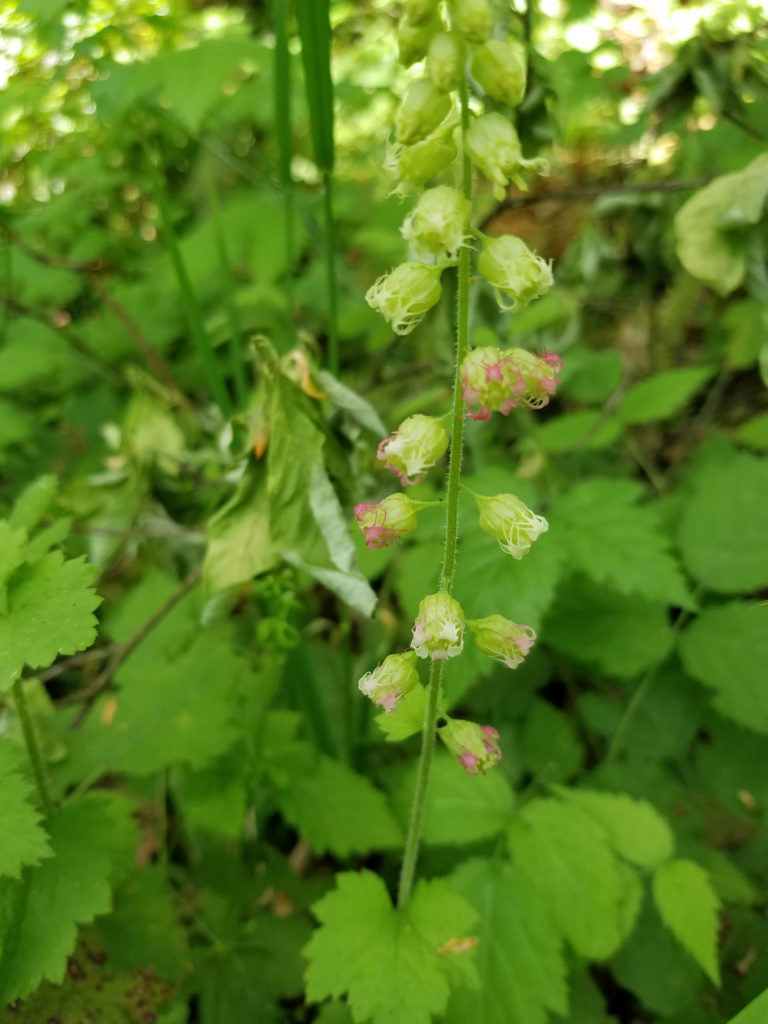
Fringecup, Tellima grandiflora
Saxifragaceae — Saxifrage family.
“Tellima” is an anagram (rearrangement) of “Mitella” (Bishop’s cap), a related genus. “Grandiflora,” meaning “large flowered” is perhaps a misnomer, for the flowers are not large but about 6 to 8 mm across. Perhaps it is the imaginative design of the flowers that is grand. The sepals are fused into a cupped calyx with a fringe of five lacy petals perfectly reflecting the common name of “fringecup.”
The fringecup has a rosette of basal leaves around a short central stem from which tall flower spikes unfurl in spring. This characteristic growth habit is also common to fringecup’s related woodland neighbors—the pig-a-back plant, the foamflower or coolwort, and alumroot or heuchera. Precise identification is made much easier if the flowers are present for these are quite distinctive. The perennial fringecup thrives in moist woods in areas not quite as wet as preferred by pig-a-back plant. The vertical flower spike unfurls in spring and summer, with the greenish-white flowers taking on a pinkish glow as they mature. Flowers turn into seed-filled capsules shaped like a miter (Bishop’s cap). By summer and fall the dried seed capsules have waved to and fro with the wind, dutifully spilling the tiny seeds for another generation of fringecups. Erna Gunther reports that the Skagit pounded and boiled the plant, then drank the tea as a cure for various illnesses and to restore appetite.
Information courtesy of “The View From Springbrook Park; an Illustrated Natural History” by Ed Chinn.
Photos taken by Laura Tanz
Sponsored by Friends of Springbrook Park; Lake Oswego, OR